Ship DARK "Dirk"
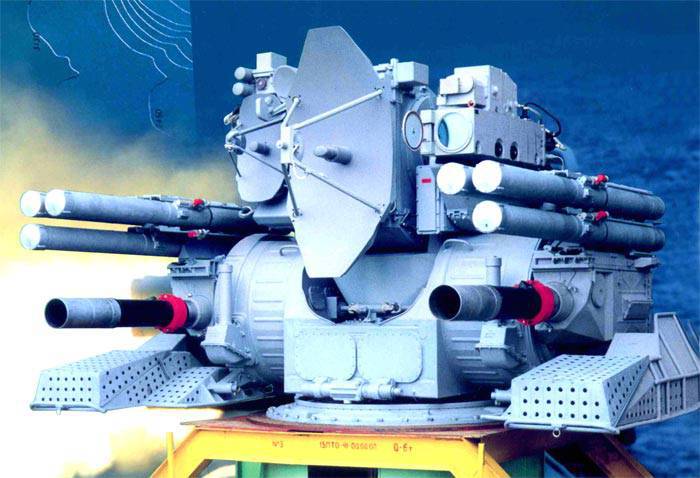
In the late seventies in the Tula Design Bureau instrument-making began work on the topic "Dirk". The project manager was A.G. Shipunov. As part of the scientific and design work, it was supposed to create a new anti-aircraft complex designed to be installed on ships and capable of fighting all types of existing and prospective threats. To perform the tasks it was necessary to eliminate several problems inherent in the old ship anti-aircraft systems. So, it was required to significantly improve the capabilities of the anti-aircraft complex in the field of detecting and tracking targets, including high-speed ones; increase the probability of hitting the target; and increase ready-to-use ammunition and speed up recharging.
As a result of analyzing the capabilities of modern and prospective anti-ship missiles, it was decided not to make an artillery or missile anti-aircraft complex, but a system that combines the best qualities of both of these defenses. As a result, "Dirk" became a rocket-artillery. By this time, the designers had already had some experience in creating such systems, since shortly before that they had created the land-based anti-aircraft missile-artillery complex (SPRA) Tunguska. It was decided to use some of the existing developments. In particular, some of the Tunguska nodes almost without changes went to the Dirk.
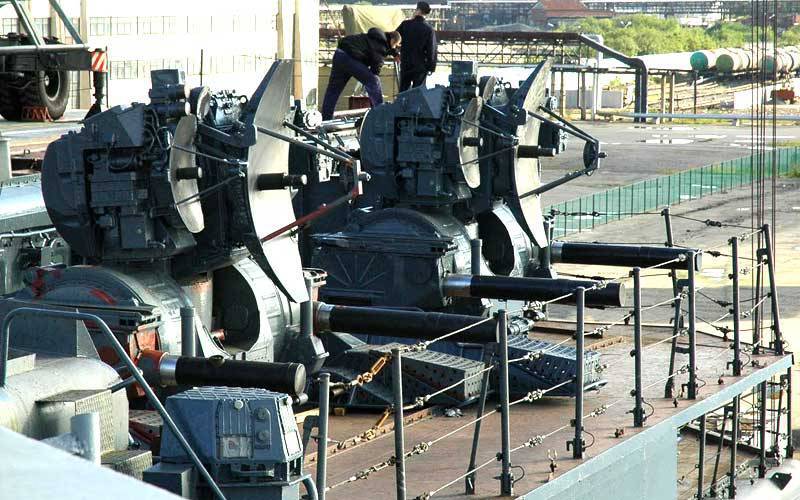
However, most of the elements of the shipborne DIRECT "Dirk" (index GRAU 3М87) was designed anew. Such novelty can be traced even in the structure of the complex: depending on the need, one ship can receive one or two command modules of the DIRECT "Dirk" equipped with a radar station for target detection and a digital control system, and up to six combat ones. Thus, a small ship or boat can carry only one combat module with missiles and guns, and a large destroyer or cruiser receives several sets of anti-aircraft weapons, which meets the needs of a particular class of ships.
The 3C87 combat module with some limitations can be installed practically on any part of the ship deck, depending on the need. The total weight of the module is 9500 kg (12 thousand kg with ammunition). The main equipment of the combat module is mounted on a common turntable, which allows guiding missile and artillery weapons in the horizontal plane. Radar and optoelectronic stations are located in the upper part of the rotary module, which are designed to target weapons. On the side surfaces of the combat module 3C87 placed guns and rockets.
The artillery part of the Kortik complex incorporates two AO-18 automatic cannons of 30 caliber of millimeters. Six-barreled guns are capable of shooting at a rate of up to 4,5-5 thousand shots per minute and conduct effective fire at ranges up to 1500-2000 meters. The maximum sighting range is equal to 4 kilometers. In order to avoid damage to the rockets by powder gases, the blocks of the trunks of both guns are covered with cylindrical casings. Ready to use ammunition for each of the guns - 500 shells. It is interesting that, in contrast to the previous artillery complexes, the Kortika’s ammunition system uses auger-free, shelling-free projectiles. Ammunition is stored in two drums next to the guns, and not in the turreted volume.
Shipborne anti-aircraft missile and artillery complex Kortik on on SKR "Steregushchy" pr.20380
Above the guns in the combat module placed missile launchers. On the sides of the upper part of the 3C87 module there are two swinging platforms on which the blocks of the transport-launch containers of guided missiles are mounted. The standard ready-to-use ammunition of the missile part of the DIRECT "Dirk" - six or eight missiles. After these missiles are used up, the supply of new ones from the cellar is possible. To simplify the production and operation of the rocket 9М311 with minimal changes was borrowed from the land anti-aircraft complex "Tunguska". According to some sources, for some time the rocket for the “Dirk” was called 9М311К, but later the last letter disappeared as unnecessary. A two-stage rocket with solid-fuel engines and a launch weight of about 43 kg (60 kg per container) in flight accelerates to a speed of the order of 900-910 meters per second. The maximum range of action - 8000 meters. The height of the lesion is up to 4000 m.
Missiles 9М311 are displayed on the target with the help of a radio command guidance system. The capabilities of the radar and optoelectronic stations allow simultaneous tracking of up to six targets. At the same time, according to some data, one combat module can attack only one target at a time. The 9М311 rocket with radio command guidance destroys the target with the aid of a fragmentation warhead that was first used on guided munitions for a shipborne anti-aircraft system. When an explosive is blown up, rods with a length of 600 millimeters and a diameter of 4 to 9 mm are crushed into fragments. In addition, for the additional defeat of the target on top of the rods in the warhead are light ready-made fragments. The greatest effectiveness of destruction is achieved by undermining the warhead at a distance of 3-5 meters from the target.
Characteristics of missile and artillery weapons of the Kortik complex allow it to destroy various types of targets located in a sector with a radius of up to 8 kilometers and a width of about 350 meters from the axis of the combat module. In the case of anti-ship missiles, the maximum effective firing range is reduced to 5 km. The capabilities of the 3C87 combat module allow for some semblance of layered air defense. So, at ranges from 1,5 to 8 kilometers, the target is attacked with guided missiles. A target that breaks through missile defense is attacked by two quick-firing cannons. The applied architecture of the Kortik complex allows attacking both aircraft and high-precision with high efficiency aviation weapons and anti-ship missiles. The claimed probability of hitting a target located in the range of the complex exceeds 95%.
When creating the new shipborne DIRECT "Dirk", it was assumed that in the future it would partially or completely replace the old artillery systems of a similar purpose. Because of this, for example, the diameter of the shoulder strap of the 3C87 combat module corresponds to the same parameter of the AK-630 artillery complex. However, in practice, both systems are adjacent to each other and are used in parallel. The fact is that the “Dirk” complex was adopted only in 1989 year and due to subsequent heavy events in the life of the country could not become the main anti-aircraft armament of ships in the near zone. In addition, the wide distribution of this complex put one of its characteristic feature. The combat module has a height of 2250 mm above the deck, which imposes certain restrictions on the choice of its location.
Nevertheless, a number of types of ships received new rocket and artillery systems. The first carrier of the modules of the complex "Dirk" during their tests was the rocket boat of the 1241.7 "Lightning" project. On it test shooting and operational development of all systems were made. In the future, the serial "Dirks" were installed on ships of other projects. Thus, the heavy aircraft-carrying cruiser "Admiral Kuznetsov" of the 1143.5 project is equipped at once with eight combat modules of the DIRECT "Dirk". Two heavy nuclear missile cruisers of the 1144 project (Admiral Nakhimov and Peter the Great) each carry six combat modules. The large anti-submarine ship Admiral Chabanenko of the 1155.1 project has four combat modules. Two or one module each with missile and artillery weapons are installed on the 11540 project patrols, as well as in the 1135.6 and 11661 project frigates.
Back in the early nineties, a new designation, the Dirk “Dirk”, appeared in promotional materials. For export was offered a variant called "Chestnut". According to reports, the export version of the "Dirk" was almost no different from the base version intended for ships of the Russian Navy. In this configuration CRAFT "Chestnut" interested foreign buyers in the face of the Indian military. Built for India, the 1135.6 frigates carry one combat module and one command module of an anti-aircraft complex. From 2003 to 2013, the Indian Navy received ten 1135.6 frigates equipped with the Kashtan MASTER.
In 2008, the guard ship “Steregushchy” of the 20380 project, armed with the new KORTIK-M, was accepted into the Russian Navy. From the base complex, the upgraded version is distinguished by some structural elements and weapons. All the changes applied ultimately had a beneficial effect on the characteristics and capabilities of the entire anti-aircraft system. For example, it was possible to achieve a noticeable relief design. The total mass of the combat module with ammunition does not exceed 10 tons.
The artillery part of the complex is made on the basis of automatic guns AO-18KD, representing the further development of the basic AO-18. The main difference between the updated guns - the initial velocity of the projectile. With the help of longer barrels, the Kortika-M cannon accelerates high-explosive fragmentation shells up to the speed of 960 m / s, and armor-piercing subcaliber - up to 1100 m / s. Thus, using the same projectiles and having similar characteristics of the range and height of the lesion, anti-aircraft guns AO-18KD provide greater effectiveness of hitting the target. The total ammunition ammunition increased to 3000 shells.
In addition to the new guns ZRAK “Kortik-M” received new missiles. The controlled ammunition 3М311-1, while maintaining the dimensions and weight of its predecessor, is capable of hitting targets at a maximum range of 10 kilometers. It is also necessary to note the update of the electronic part of the ship's anti-aircraft complex. As stated, the response time of the “Dirk-M” is noticeably shorter than that of the MASK of the previous model. This indicator, according to different sources, ranges from 3-6 to 5-7 seconds. For comparison, the complex "Dirk" can attack a target only 6-8 seconds after its detection.
In parallel with the complex "Dirk-M" was created its export version called "Kashtan-M". In the first half of the two thousandth, it was offered to the Indian military for installation on the Admiral Gorshkov aircraft carrier (later this ship was given the new name Vikramaditya). After numerous negotiations, India abandoned these anti-aircraft systems. As a result, the currently updated "Dirk-M" is used only in the Russian navy.
On the materials of the sites:
http://rbase.new-factoria.ru/
http://kbptula.ru/
http://redstar.ru/
http://militaryrussia.ru/blog/topic-16.html
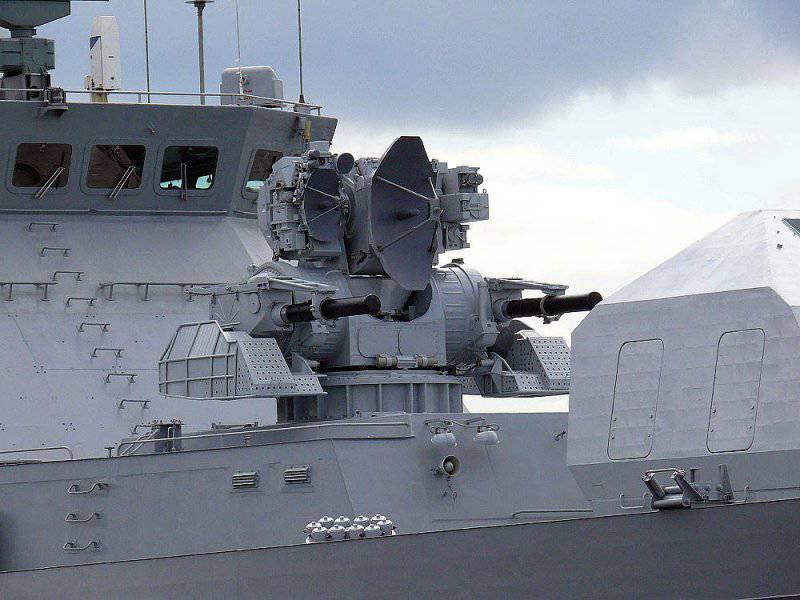
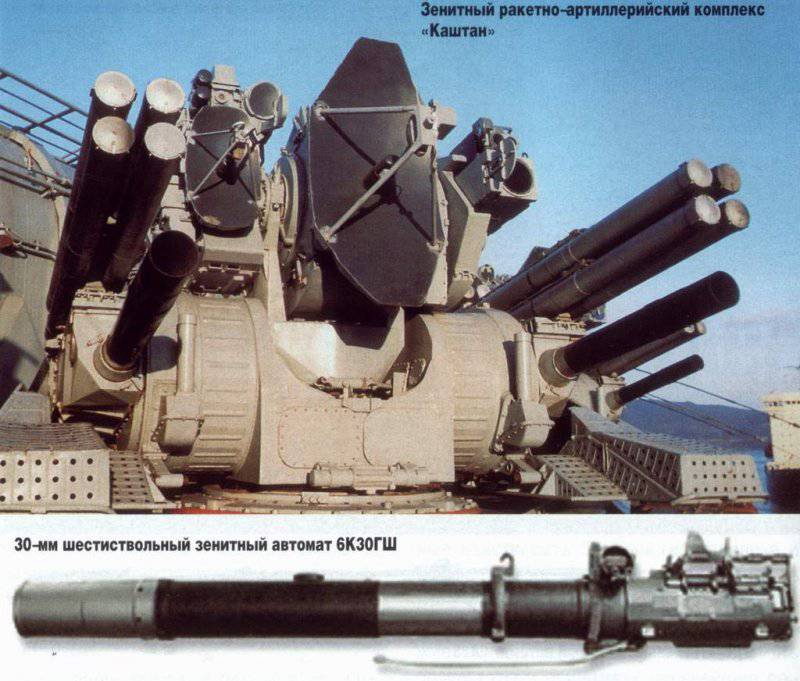
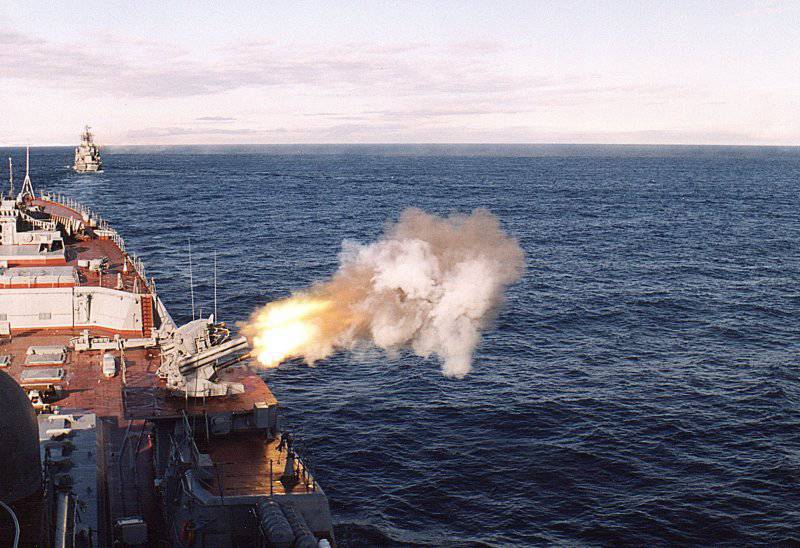
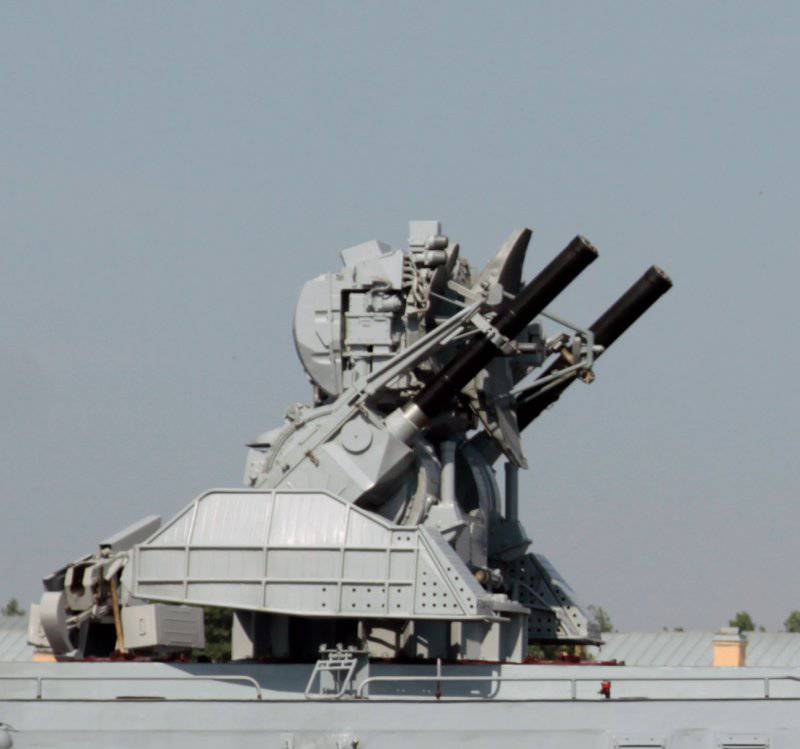
Information